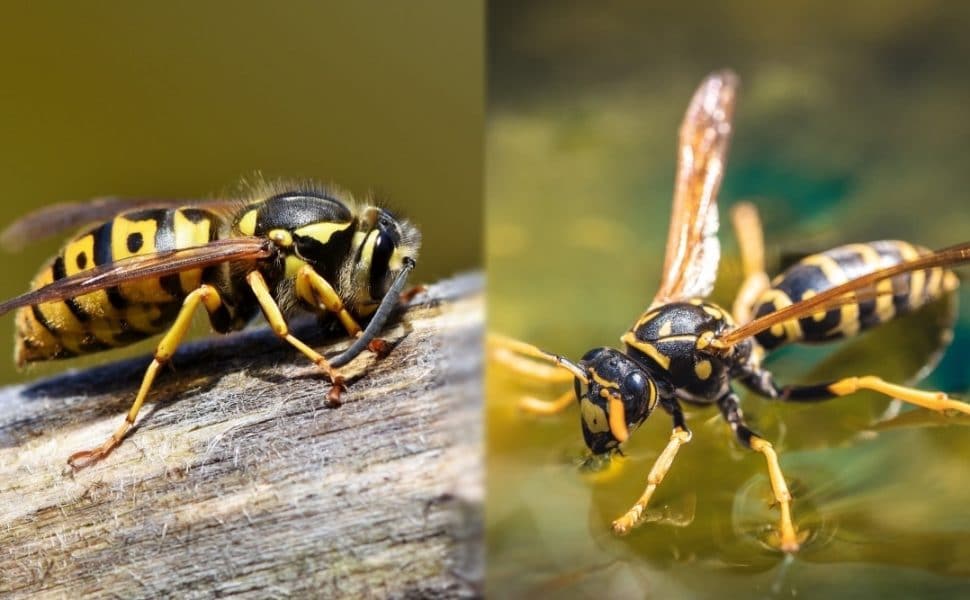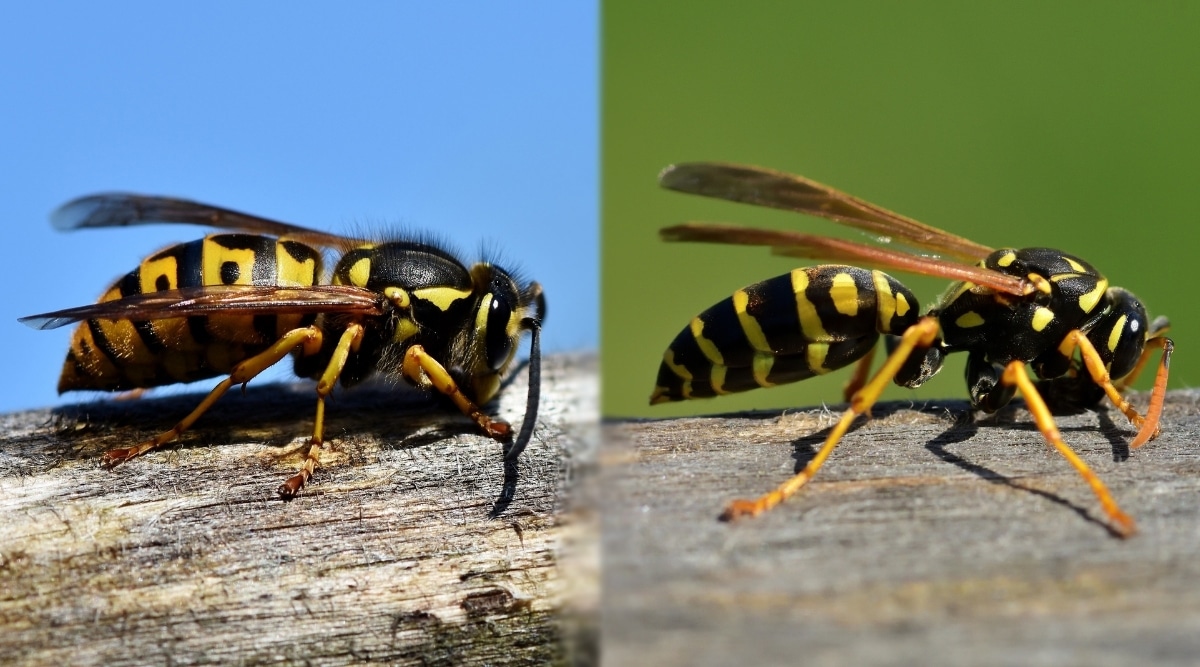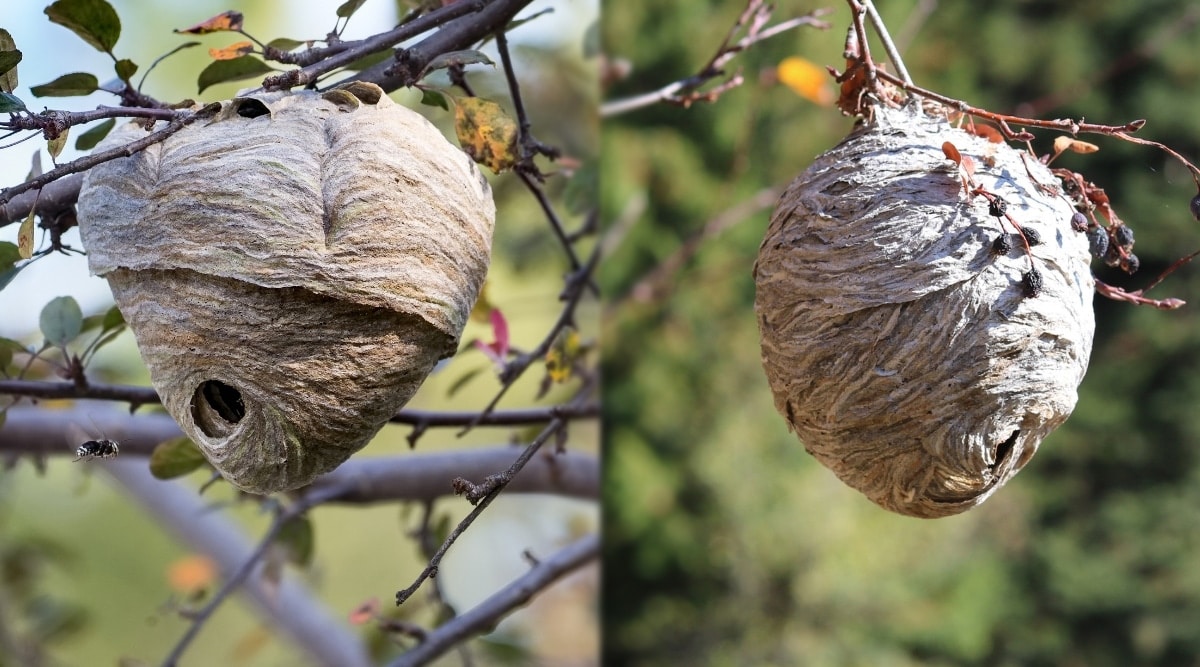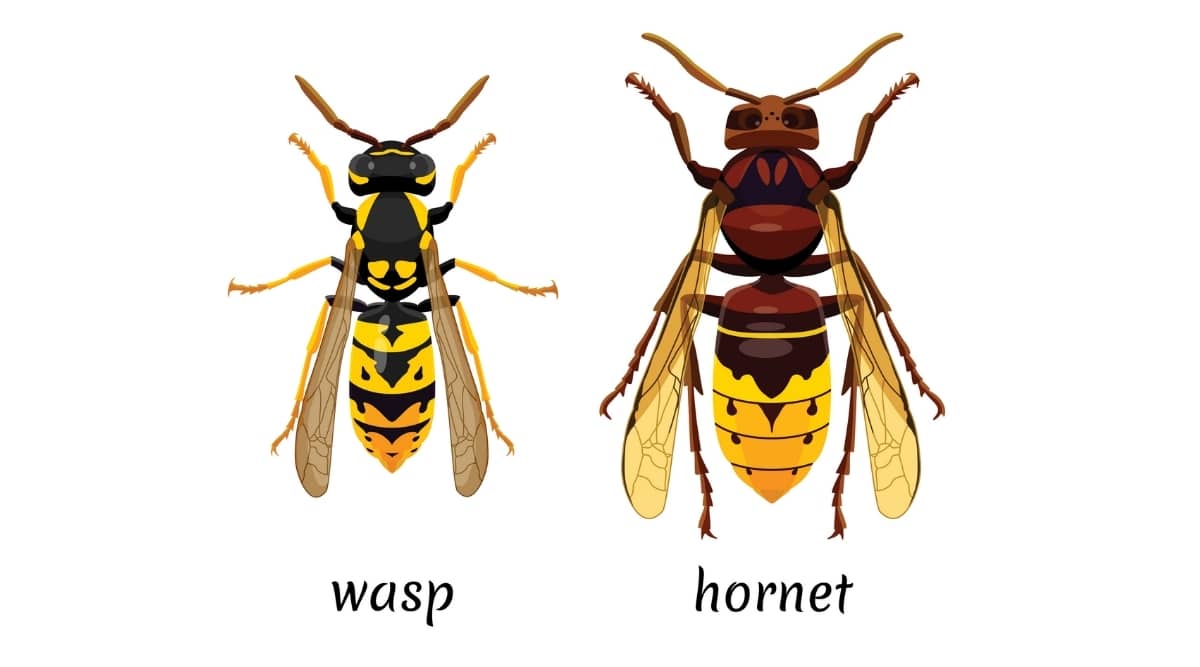How to Identify Yellow Jackets Vs Wasps Vs Hornets
Pest Information
Hornets vs. Yellowjackets: Differences & Similarities With Pictures
Having a hard time figuring out if it was a hornet or a yellow jacket that stung you while you were outside? Despite what you may think, these two insects may look similar, but they are actually quite different in many ways. Learn about these two wasps, and how to tell them apart from one another!

When you buy something through one of the links on our site, we may earn an affiliate commission.
When you search for hornets online, you get a barrage of pictures of yellowjackets. Why is that?
These bugs aren't the same. They're not only classified differently; they also have different eating and nesting habits. But if you're curious to see whether you have hornets or their yellow cousins in your house, you might want to check out this quick wasp guide.
Hornets and yellowjackets almost look that same, but they're individual species with different tastes and behavior.
Differences in Appearance

Yellowjackets (or Yellow Jackets) and hornets are both wasps. They're both members of the Vespidae family, a group of insects that have vertically folded wings and pronotums that expand back to the tegulae, looking like a triangle when you see it from a lateral point of view.
Both insects have the same basic body parts. They both have six legs, two wings and a thin waist which is a common trait for insects of their order.
But this is where the similarities stop. You see, yellowjackets look different. For starters, they're smaller than hornets. On average, they only grow to about 1 inch while European hornets, one of the most common insects in the US, can grow to up 1.3 inches long. The largest can even reach 2.2 inches.
Additionally, unlike bees, yellowjackets don't have heavily visible hair on them, so their distinctive colors stand out. They have two dominant colors, black and yellow. Their abdomen has stripes of these two colors which has become one of their most famous identification mark while the rest of their body show vivid patterns of the same hues.
Hornets also vary in colors. European hornets come in a mixture of red, black and yellow. Their abdomen has almost the same stripes as that of a Yellowjacket's, but their head and thorax are colored red and black. Oriental hornets are red all over with a thick yellow stripe neatly placed on their abdomen, and Asian giant hornets are riddled with black and orange.
Differences in Feeding Habits

Hornets and yellowjackets have almost the same preference when it comes to food.
Both insects are predatory. They hunt a variety of bugs like caterpillars, beetles and flies. And they mostly do this to feed the grubs back in their nests.
They're also scavengers. They both enjoy sugary food like fallen fruits, honey, nectar, candy bars and sodas. Hornets feed a bit differently and like to hover, which makes them more easily identifiable.
However, yellowjackets are more susceptible to eating meat and carrion from large animals. They like to feed on roadkill and dumpster meat. They like it so much that they even have a nickname – "Meat Wasps". With this, most homeowners use meat to trap yellowjackets.
Differences in Nests

A hornet nest looks like an elongated cone while a yellowjacket's usually has no definite shape.
Both insects don't have the wax-making glands that bees do. So they build their nest from a papery substance made from wood (or mud) that's mixed with their saliva.
For hornets, their nests usually look like giant football-shaped cones that have multiple holes at the bottom, and they're known to place it almost everywhere. They can build them inside houses, attics, burrows and garages, making them difficult to get rid of. They can also attach them onto ceilings, walls, wooden beams, trees, shrubs and even on window sills.
On the other hand, yellowjackets typically have the same behavior, but they're fond of nesting below ground. The Western and Eastern yellowjackets specifically build their homes inside dirt. They either look for preexisting tunnels or holes or they make one themselves. They've learned to excavate soil – scraping, carrying and dumping it outside to enlarge the nest. This is why you should be careful threading through yellowjacket-prone areas. You might step on a nest and aggravate them.
When it comes to telling these two uniquely different wasps apart, remember that the two may be related, but they're not the same.
Yellowjackets are smaller, and they look different. They also have habits that their larger cousins don't do often. So when you're looking for ways to get rid of one of these insects, it's best to identify which one you have first. After all, learning about your enemy is the best way to win a battle.
Sting Differences

Both of these insects tend to sting people. But it's far more common with yellowjackets. This is simply because yellowjackets end up being closer to humans due to how they feed.
Because both of these insects are in the Hymenoptera family, their stings will hurt about the same. Their stings will also look similar, and can cause allergic reactions to individuals that are sensitive to stings from this type of insect group.
Size Differences

When it comes to size, yellowjackets are smaller than hornets. This makes them more easily identifiable if you are comparing the two, and trying to figure out which one of these insects stung you.
Yellowjackets are actually closer in size to a honeybee. Hornets are actually much larger. Some types of hornets can actually get to be over 2 inches in total size, making them somewhat unmistakable for other types of flying insects that may sting you.
Wrap Up
If you've recently been stung by either of these two insects, chances are you'll be just fine. Figuring out what type of insect you encountered is usually the first step in diagnosing what your next steps should be. This includes treatment, and eradication of any nests around your home that may pose a risk to you and your family.
How to Identify Yellow Jackets Vs Wasps Vs Hornets
Source: https://www.gopests.com/hornets-vs-yellowjackets/